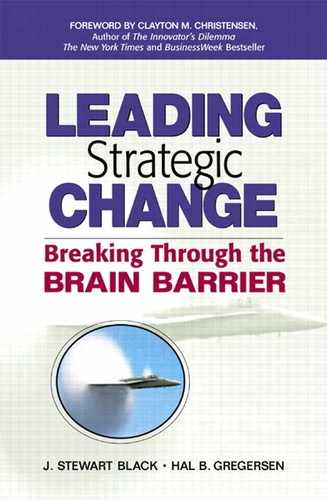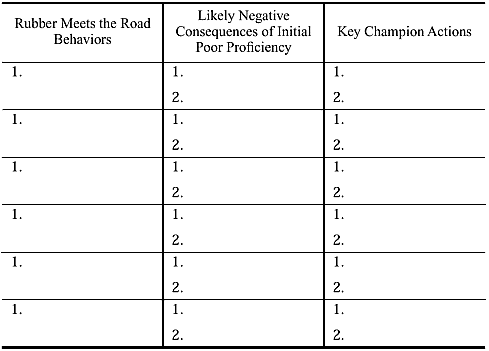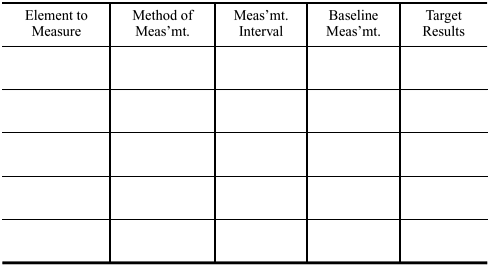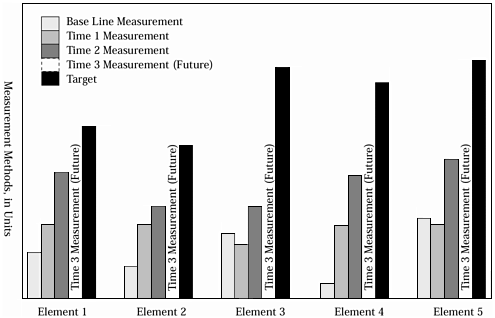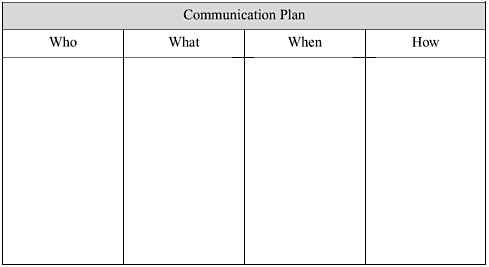In many ways, failing to finish represents the saddest of the three failures. It is disheartening to see so much time and energy (to say nothing of money) funneled into a strategic change, only to watch it go down the drain as people get tired and become lost.
People get tired primarily by doing the right thing poorly at first. Virtually no one, and certainly not large groups of people, become instantly proficient at following new maps, especially if they are radically different from the past. Even when people are motivated to try, they make mistakes. These mistakes or performances at less than ideal levels of proficiency generate negative consequences. People get worn out as they try to do the right thing but fail to obtain the desired results.
This is why change champions are needed where the rubber meets the road. Champions reinforce the desired behaviors, even when the right efforts do not generate the desired results—at first. To ensure that champions are in place to compensate for this initial gravitational inertia, we provide two straightforward tools.
The first tool (Exhibit 11-1) helps you make explicit three key elements of championing:
Rubber-meets-the-road behaviors. It is absolutely critical to identify in advance the “rubber-meets-the-road” behaviors necessary for the strategic change. What must be different for the change to gain traction and produce an impact?
Likely negative consequences of initial poor proficiency. It is helpful to identify in advance likely negative consequences for less than ideal proficiency in following the new map. At a minimum, champions need a clear idea of what these consequences will be. We have found that making them explicit and explaining them to those making the change is also helpful. This way, when people obtain undes-ired consequences while trying to do the right thing, they will not become as tired or discouraged.
Key champion actions. Finally, it is important to make explicit what actions change champions should take when people exhibit the right behaviors but do not get the desired consequences. Without taking this third step, you simply leave to chance—a roll of the dice—that change champions will take the appropriate steps to compensate for the downward drag or even change-breaking effects that early negative consequences can generate.
We use the chart in Exhibit 11-1 to help change champions map out these three key elements.
Stopping here, however, assumes that champions capably provide the needed compensatory actions to balance negative consequences. From our experience, this is not always the case. Just as the new map is likely to require individuals to engage in new behaviors, it is also likely to require new behaviors of change champions in breaking through this segment of the failure-to-finish barrier. Therefore, simply but systematically assessing required capabilities, current capabilities, resulting gaps, and needed bridging actions is a must for breakthrough change. The chart in Exhibit 11-2 will help you do this assessment.
Using these two tools, you will gain a clear understanding of where and why people will likely get tired, and you will have the champions and actions in place to compensate for the sluggishness. These tools will help you maintain change momentum until improvements in proficiency can produce positive consequences that naturally reinforce desired behaviors.
Unfortunately, even if champions are placed well and reward the desired behaviors to compensate for the early negative consequences to change, people can still become lost. They can lose track of where they are, how much progress they have (or haven’t) made, and how the change is going for others. To keep people from feeling lost and giving up, charting and communicating progress play a pivotal role. As already discussed, these actions must be done at both individual and group levels. The appropriate group level may be a work group or an entire company. That decision depends largely on the nature of the change. The larger the change and the more dramatic the strategic shift for the company, the more information must be gathered at various levels, including the company level, and communicated back to people.
Except for the simplest of change initiatives, there are typically dozens of measures of progress that we might look at, creating hundreds of messages that then must be communicated to people. To describe this challenge, we take examples from flying and driving. Although confronted with potentially hundreds of cues, effective pilots and drivers alike focus on a few instruments that measure key elements. Consequently, these instruments are usually easily seen in a “heads-up” display on a plane or in the dashboard on a car. In airplanes, speed, altitude, and heading are key elements to measure. Likewise, any change initiative must include a limited number of key elements to monitor. You might think of this as your heads-up display or “performance dashboard” for change measurement, as shown in Exhibit 11-3.
There are five preparation steps to creating and monitoring your performance dashboard:
Element to measure. First, you should identify what you believe to be the key elements to measure (for example, attitudes and/or actions). If we return to our gate agent, Sam, customer complaints are clearly an important measure of whether the Customer 1st initiative is working. Customer satisfaction may also be an important element to measure.
Method of Measurement. It is also helps to establish how the key element will be measured. For example, an airline might measure complaints based on the number of written complaints received per 1,000 passengers. Customer satisfaction might be measured via a survey given to a random set of customers.
Measurement Interval. It’s important to establish how often the measures will be taken. Some measures are more difficult and costly to procure than others, and other outcomes take longer to formulate. Therefore, measures are useful only if taken with longer time intervals between assessments.
Baseline Measurement. Once key elements and methods of measurement are determined, establishing a baseline of performance is critical before the change initiative gets underway. Without a baseline, it is difficult to determine how much progress is being made.
Target Results. Finally, establishing target performance levels is also critical. Should Sam be shooting for less than 10 complaints per month or less than one? The chart in Exhibit 11-4 can help you to capture these change measurement issues.
When it comes to charting progress on these measures, there are as many approaches as there are companies. As far as we know, no research says definitively that one method of charting progress is more effective than any other. We can say from our experience that graphs have a stronger impact on people than the mere numbers behind them and that charts showing progress over time, relative to the final destination, help people the most to avoid feeling lost. Exhibit 11-5 presents a sample chart to illustrate these two points.
With the key elements of measure established, your next step is determining the general communication plan. Entire books are devoted to effective communication plans, so we won’t try to reproduce all those ideas here. Rather, we will stick to the fundamentals that everyone knows but that are useful to review.
Any communication plan starts by determining who the information receiver will be. In our experience, companies tend to error in the direction of sharing change progress with too few people. Whenever we assess employees’ satisfaction with communication, especially related to strategic change initiatives, we have never found a situation where employees felt that too many people were informed as to how things were progressing. In almost every case, employees who were excluded from the communication believed that they should have been included. We are not suggesting that these employees were always right and should have been included, but their feelings do illustrate how much easier it is to error on the side of limiting the “who” of communication plans too much than in expanding the recipient list too far.
Next, the communication plan should determine what will be shared. As mentioned earlier in the book, it’s best to share the good, the bad, and even the ugly. To think that certain people can help you bring about a needed change and to believe that they are not mature enough to understand how the change is really going communicates a double standard, loudly and clearly.
When is the third element to determine in a communication plan. As already mentioned, we should take some measurements more often than others. Consequently, in some cases, not everything is communicated at the same time. In general, it’s a mistake to wait until everything is available before communicating anything. People can easily feel lost while waiting for perfect information; therefore, some information sooner is better than all the information later.
Finally, in this age of various communication mediums, deciding on how to communicate progress presents unique challenges. Due to the range of options (e-mail, voice mail, “snail mail,” video, face to face, presentations, etc.), you may need to choose a different medium for different times or for different content. For example, content such as declining customer satisfaction scores after the launch of a Customer 1st program is probably best communicated through more complex and rich mediums, such as live presentations or videos, versus mass e-mails. Again, this book’s purpose is not to outline all the details and nuances to designing a communication plan but simply to reinforce that a plan is necessary and that you should incorporate who, what, when, and how into it. The chart in Exhibit 11-6 provides a place to map out the basics of your change communication plan.
With the right champions in the right place—where the rubber meets the road—and with the right heads-up display of core measures, combined with a plan to communicate them, you have created the key elements to break through the final brain barrier—failure to finish. After breaking through the barriers of failure to see, failure to move, and failure to finish, then firmly establishing a new map for the new destination, the only problem remaining for remapping change is guarding against our natural tendency to become trapped once again by the new map that we have so faithfully followed.
